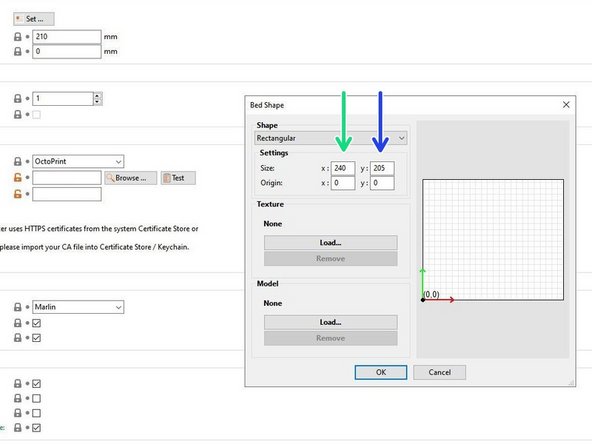-
-
This step is only needed because no custom firmware is available yet.
-
You can use the latest Bear Calibration firmware or the latest stock Prusa firmware.
-
Download gcode files using this link: https://github.com/gregsaun/bear_extrude...
-
Copy the following files to your SD card
-
bear_hemera_config_mk*.gcode(choose the version corresponding to your printer) -
This file is used only once to configure your printer to use the Bear Hemera. You can reset this configuration anytime by running the
reset_to_prusa_mk*.gcode -
unload_filament_hemera.gcode -
You have to use this file every time you want to unload filament from your Hemera. It is needed because the filament path is much shorter than Prusa extruder.
-
-
-
This step only needed because no custom firmware is available yet.
-
Insert the SD card in your printer with the Bear Hemera
-
In the menu of your printer select "Print from SD" and choose the file
bear_hemera_config_mk*.gcode. -
The printer might say it is an incomplete file but it is a wrong message, click to continue and print this file.
-
You can now delete the
bear_hemera_config_mk*.gcodefile from the SD card because it will not be used anymore.
-
-
-
From the printer's menu, disable the fan check with the menu Settings -> Fans check - On / Off
-
This is needed because the Hemera fan does not have a third wire to read the fan rotation
-
From the printer's menu, disable the filament sensor with the menu Settings -> Filament sensor - On / Off
-
As of today, the Bear Hemera does not have filament sensor, therefore it is better to disable it
-
-
-
From the printer's menu, run the PID calibration for your hotend with the menu Calibration -> PID calibration.
-
-
-
Raise the X axis to more than 30mm by pressing the LCD knob for longer than 3 seconds. Turn the knob to move up
-
Place a metallic object underneath the Pinda probe. The red light on the probe should turn off
-
If this test fails, do not attempt to print or use your printer. Carefully verify the wiring of your PINDA
-
The recent Prusa firmware allows you to check the value of the Pinda probe via the LCD menu Support -> Sensor info
-
-
-
From the printer's menu Settings -> Temperature -> Nozzle, set the nozzle temperature to 80°C
-
Return to the info screen (main screen)
-
Verify that the hotend fan is starting as soon as the temperature exceeds 50°C
-
Let the hotend cool down using the printer's menu Preheat -> Cooldown
-
If this test fails, do not attempt to print or use your printer. Carefully verify carefully the wiring of your hotend
-
-
-
From the printer's menu Settings -> Temperature -> Fan speed, set the fan speed to 130.
-
The nozzle fan (front fan) should now rotate at half speed.
-
If this test fails, do not attempt to print or use your printer. Carefully verify the wiring of your nozzle fan.
-
-
-
Open PrusaSlicer, go to Printer Settings -> General -> Size and coordinates, then click on the Set ... button
-
On the Bed Shape window, set the X size to 240
-
And Y size to 205
-
-
-
In PrusaSlicer, go to Printer Settings -> Extruder 1 and reduce the retraction length to 0.5mm for PETG and 0.3mm for PLA
-
These values are only a starting point and you will need to adjust them later according to your tuning
-
The Hemera has a much shorter filament path and efficient cooling tha original Prusa extruder. If your retraction is too long you might clog the Hemera
-
This setting might be overridden by your filament settings, make sure to check them
-
-
-
With the BearMera, the bed calibration and self test will fail and should not be executed.
-
Bed calibration fails because of the geometry of the extruder. The Pinda and the nozzle have different positions.
-
The self test will fail because of the E3D fan which does not have the rotation sensor. It will also fail because of the bed calibration.
-
The bed calibration could potentially crash the nozzle which would damage the bed surface.
-
-
-
Calibrate your first layer with the printer's menu Calibration -> First layer calibration.
-
The first layer calibration will remove the following message that could appears when you power on the printer: "Distance between tip of the nozzle and the bed surface has not been set yet. Please follow the manual, chapter First steps, section First layer calibration.".
-
It is possible that with the weight of the Hemera, the X axis is moving down on one side when the printer is off for some time. If this happens, move the X up until it crashes as explained in this step. Note that his can also happen to stock Prusa printer (and so stock Prusa extruder)
-
After calibrating your first layer, we recommend to set your extrusion multiplier according to our guide here: Extrusion multiplier and filament diameter
-
-
-
Congratulations, you have finished to install and calibrate your BearMera extruder.
-
Happy printing :)
-




